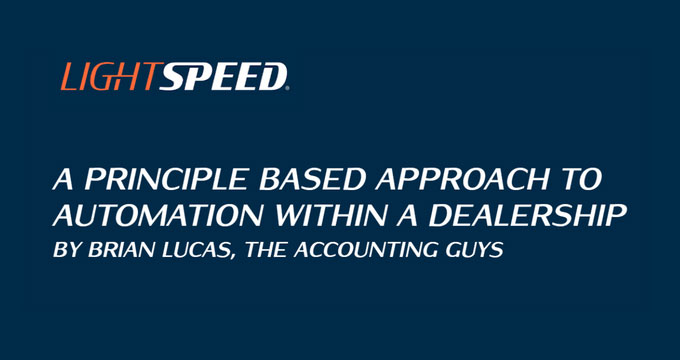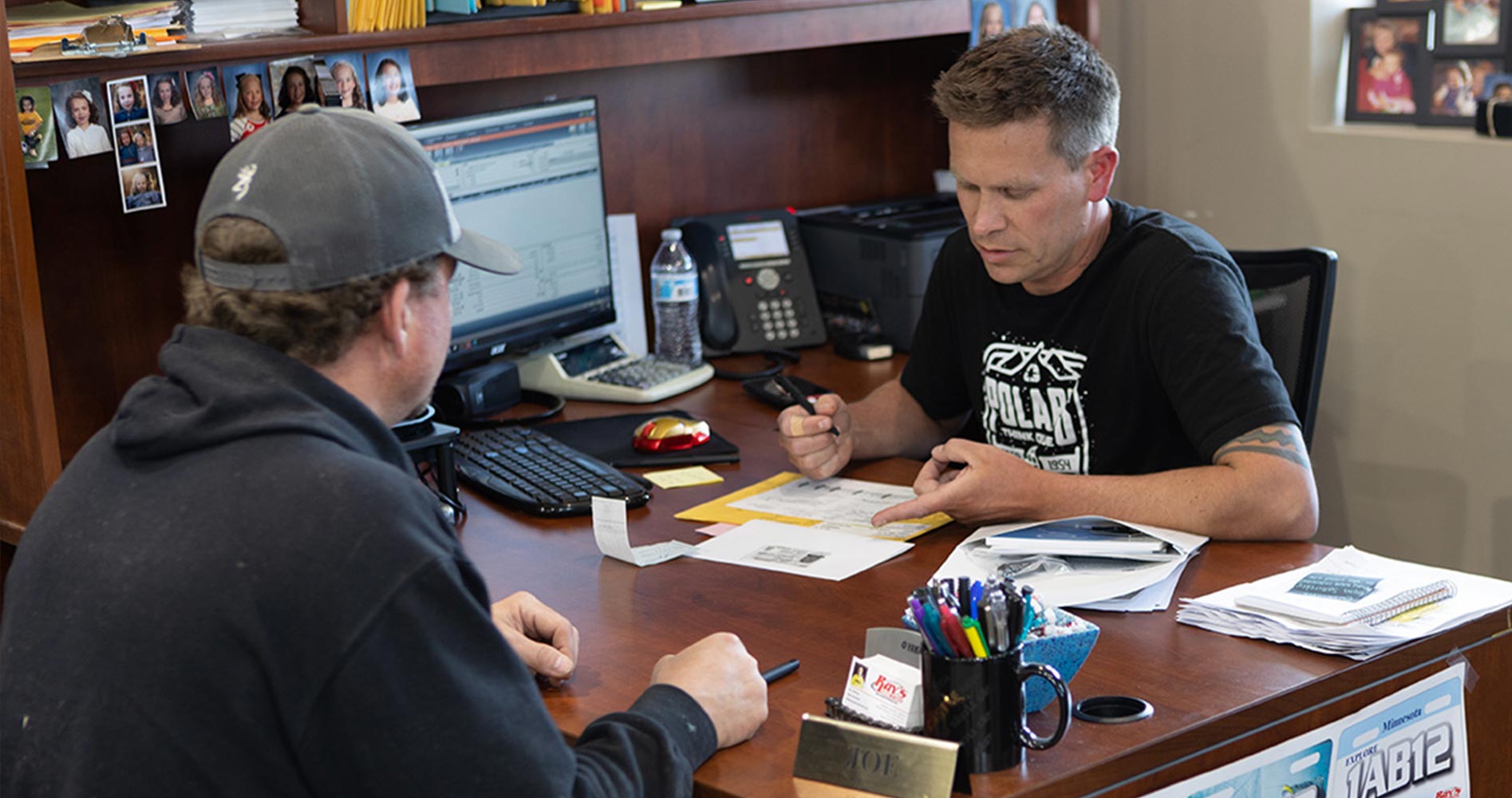
My firm, The Accounting Guys, went from serving 15 dealerships to serving over 200 power sport, marine, and RV dealerships in just five years. While there isn’t one silver bullet that allows for that level of expansion, a key factor to our growth is adherence to one of our core values; “We automate processes so clients can focus on what’s important.” In honor of this core value, three of our full-time employees spend a significant percentage of their time automating internal processes, and all of our employees consult on automation for our clients.
Our premium product is essentially problem-solving. As such, we take great pains to reduce manual tasks and unnecessary keystrokes in order to give our personnel more time to focus on higher-value work.
Understandably, accountants are not the only ones concerned with automation. Automation applies to all industries—including the dealership world. As such, dealer stakeholders should strongly consider areas where automation can improve process efficiency on an ongoing basis. A key factor in automation is a Dealer Management System (DMS) with the ability to automate as many processes as possible.
With that in mind, I’d like to discuss the three main factors we consider when identifying and prioritizing processes to automate.
Time
The first factor we consider is the amount of time spent on any given process. Essentially, we look for processes we spend a lot of time in. For example, my firm spends thousands of hours a year on bank reconciliations for our clients, and as such, the bank reconciliation process was an ideal candidate for automation. Our development team automated every possible step in the process, including locating and opening each reconciliation spreadsheet from our server with just the press of a few buttons. This saves our clients money, as a machine computes these automated tasks faster and does not need to be paid. It also gives our employees more time to work on higher-value portions of the process and other projects that require a human to accomplish.
Dealerships are not unique with respect to this issue. There are repetitive and/or time-consuming tasks that can absorb employee time—time that carries opportunity costs. Those opportunity costs are only magnified with more employees and longer time horizons.
Your workforce’s time is valuable and quantifiable. Unfortunately, too many variables are related to each employee’s output to calculate an exact dollar value for each minute of their time. However, you can arrive at reasonable figures when relying on assumptions. For example, let’s assume your dealership has 10 employees that generate $50 of value per hour and work 50 weeks a year. If, on average, you can save each employee five minutes per day of no value or low-value work, that’s over $10,400 per year to the bottom line (10 employees ✕ 1/12 an hour ✕ 5 days per week ✕ 50 weeks per year ✕ $50 of value per hour).
I believe that it’s not only possible to do this, but it’s possible to do it repeatedly. So feel free to adjust your assumptions accordingly.
Likelihood and Magnitude of Errors
When it comes to errors, some errors might be quantitative, i.e. have a dollar figure attached to them. For example, an error might cost a dealership more in taxes, lost loan opportunities, miscalculations in their pay plans, or miss the fact that a funding wasn’t paid. Some errors are qualitative. Qualitative errors could include delays for customers, late payroll runs, etc.
We evaluate both the likelihood and the potential magnitude of errors. Manual calculations result in a higher likelihood of errors. In contrast, instances of fraud may be unlikely, but their magnitude could be significant. Weighing out the likelihood and magnitude of errors can help identify areas to automate or internal controls to put in place. Internal controls are beyond the scope of this article, but they are worth mentioning, as automation should not be thought of as the only solution to prevent potential errors and/or fraud.
Ease of Automation
If automation seems intimidating, fear not. You don’t need a computer science degree to identify processes for automation. When we began building our own custom automations, we didn’t tackle the highest-impact items first. Instead, we focussed on areas that were easiest to automate. With success, we gained more confidence and skills to handle more complicated processes.
In reality, if you go back to our beginning within the dealership world, we simply evaluated the ingredients for the best “accounting system” for dealerships. As accountants, it was tempting to use accounting systems that we were familiar with because, frankly, that would have been easier. However, we found that the best “accounting systems” were dealer management systems. Meaning, a great accounting system isn’t great if it isn’t integrated (automations!) with the rest of the dealership. A solid DMS provides automations through integrations.
When dealership principals ask me how they can improve the speed and quality of their data, I often start with the system they have in place. Sometimes, this leads me to a web of spreadsheets and manual calculations that can often be eliminated with the proper use of a well-designed DMS. The use of spreadsheets is a red flag for me when I’m evaluating processes for potential improvement because if a process is designed properly, most of the data and calculations should be handled within the DMS. When it comes to automation, don’t overlook the low-hanging fruit found in the third-party systems you use daily.
Impact of Automation
Sometimes automation can be thought of as something threatening—the first step towards a dystopian future ruled by machines. But for me, automations have freed up more time for myself and my firm to focus on how we can help more dealerships with more impact. I have witnessed over 200 dealerships do the same, and I know you can too!
